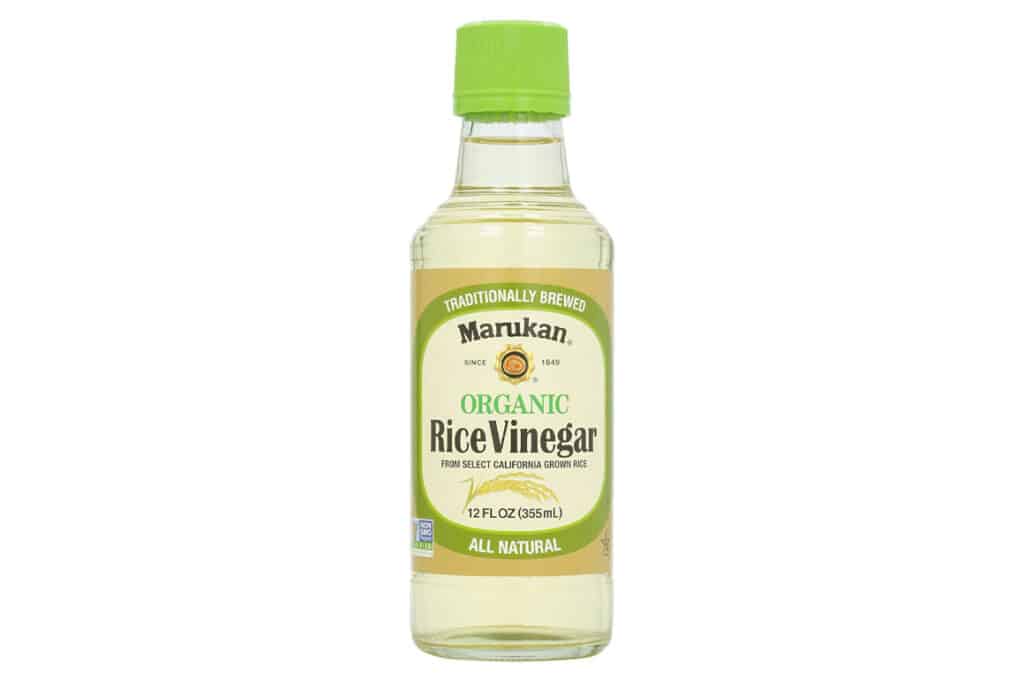If you enjoy cooking Asian food as much as I do, then you will want to check out my list of 10 essential dry Asian pantry staples to have in your pantry. We will focus on dry goods only in this post (which require no refrigeration), emphasizing gluten-free, dairy-free, and refined sugar-free options! Don’t worry; this does not mean you need to avoid your favorite Asian cuisines!

This post may contain affiliate links. Please read my disclaimer.
What Are Asian Pantry Staples?
Asian pantry staples are ingredients common in popular dishes in various countries in Asia. These staples help create traditional dishes that wouldn’t be the same without these ingredients.
What Is the Most Common Ingredient in Asian Cuisine?
The most common ingredient varies based on region and country.
However, rice is the overwhelming top choice for many Asian countries. You’ll see dishes with rice in Vietnam, Thailand, Japan, Korea, China, India, etc. But, the type of rice used in each country is different.
For example, Japanese people use glutinous rice often (named for its sticky texture). In contrast, Indian people use basmati rice in many of their dishes.
What to Typically Look Out For
Here are a few pantry items to look out for that generally contain gluten, dairy, or refined sugar:
- Oyster sauce
- Dark soy sauce
- Chili garlic sauce
- Salad dressings
- Light soy sauce (unless it’s gluten-free like tamari)
What Asian Spices Should You Keep in the Kitchen?
The most common spices I would recommend keeping on hand are Chinese five-spice, cinnamon, lemongrass, star anise, basil, coriander, and chilis.
This is a great starting point that will aid you in seasoning most of your favorite Asian dishes.
But, if you prefer a specific Asian cuisine (like Korean, for example), cater your pantry to condiments and dry goods that you would use in Korean recipes like gochugaru.
10 Essential Dry Asian Pantry Staples
1. Rice

Rice is a staple in many Vietnamese, Chinese, Japanese, Korean, and other dishes. Luckily, it’s naturally gluten-free to stock up on your favorite variety without fear of bloat or other symptoms. Truthfully, this is the one staple item I eat almost every day.
Related:
2. Coconut Milk Powder

Coconut milk is a commonly used ingredient in Thai and Vietnamese food that you can use to make anything from curries to sauces.
You can use coconut milk powder for various dishes. Unlike canned coconut milk, you don’t have to refrigerate the coconut milk powder. How awesome is that?
How does it work? You reconstitute the coconut milk powder with water and use it for any dishes that require coconut milk.
It’s important to search for the gluten-free, sugar-free, and dairy-free brands on the bag’s exterior. Some brands add milk or other ingredients to the powder.
3. Cornstarch Alternatives

Cornstarch is a Chinese cooking staple that doubles as a staple for other global cuisines (including American).
Many Chinese dishes use cornstarch as a thickener, but some cornstarch companies use other ingredients which may not be gluten-free.
Instead, I use arrowroot powder and potato starch (both gluten-free) as a cornstarch alternative when I need to thicken sauces in most of my cooking.
Related:
4. Kombu and Nori

Kombu and nori are Asian pantry staples that you use in Japanese cooking. Both ingredients are types of dried seaweed that have very different uses. These sea vegetables are naturally gluten-free, dairy-free, and refined-sugar-free.
However, be wary of flavored kombu and nori, as the seasoning mixture may include sugar or gluten.
Kombu allows you to make a delicious homemade dashi broth, a staple for many Japanese soups. Whereas nori is most commonly used in sushi rolls.
I love using kombu to make a simple dashi broth when we have weekly shabu shabu nights!
5. Rice Vermicelli Noodles

Like rice, rice vermicelli noodles are naturally gluten-free. These thin noodles are used often in Vietnamese food, like fresh spring rolls with vegetables, protein, and a dipping sauce.
You may also hear these dried noodles referred to as Bun Gao. I eat many Vietnamese foods in my household, so these are a must-have in my pantry!
Depending on what you like to eat most, you can also consider buckwheat, kelp, shirataki, soba, sweet potato, and tapioca noodles (all gluten-free!).
6. Gochugaru (Red Pepper Powder)

Korean food is all about flavor and heat. You can quickly achieve this by adding a small spoonful of gochugaru powder to any dish.
Gochugaru is dried, ground chili powder that has a coarser texture.
It’s naturally slightly sweet and has a long list of available uses, from creating a fiery flavor in soups to an ingredient in marinades for cucumber salads.
Related:
7. Daing (Dried Fish)

Daing is a popular ingredient in Filipino cooking. You’ll often see this dried milkfish made into soups, fried, or char-grilled.
When fried, they make for an excellent crispy snack full of protein.
Keep some on hand to help create quick Filipino recipes that are flavorful.
8. Rice Flour

As you might have guessed, rice flour (like rice and rice noodles) is naturally gluten-free. It’s another common ingredient in multiple countries like India, Korea, and Japan.
Traditional Indian rice flour recipes include roti, chakli, and pakodas. You can use it in everything from main dishes to bread, snacks, and sweets.
You’ll likely see a tempura batter with a rice flour base in Japan. This ingredient helps create a crispy exterior for Korean fried chicken.
9. Ground White Pepper

Ground white pepper is not well-known in American cuisine. But, it is common in many Asian dishes – particularly in Chinese food.
Part of the reason it’s popular is that it does not alter the color of the dish like black pepper flecks would.
It also offers a deliciously slow, lasting burn in dishes different from the direct heat of chili peppers.
You’re familiar with this spice if you’ve tried hot and sour soup, salt and pepper shrimp, or Chinese steamed eggs.
You can also use it for any dish you typically use black pepper. It’s especially great for light-colored soups and sauces.
10. Rice Wine Vinegar

Rice wine vinegar is made from fermented rice, an everyday pantry staple mainly found in Japanese and Chinese cuisines.
It is clear with a mild taste and is typically used in stir fry, dressings, or dipping sauces.
Other rice wine vinegar alternatives include white wine vinegar and apple cider vinegar.
Related:
The Takeaway
Adding these essential dry Asian pantry staples to your kitchen will make it easy to recreate most of your favorite Asian dishes. You’ll notice that there are still many gluten-free, dairy-free, and refined sugar-free options if you have a specific dietary restriction. In addition, your kitchen will be the envy of everyone who prides themselves in keeping up with these pantry staples!

